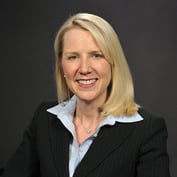Have you noticed that virtually everyone in financial services today–from consultants to product folks–is clamoring to tell you how to grab a piece of the baby boomer retirement market? I think there have been even a couple of magazines launched recently to help point you in the right direction as well. We’ve all heard the projections that upwards of 70 million boomers are poised to retire in the next 20 years, and the current mantra is that it would be a shame if you missed out on this demographic gold mine.
Call me crazy, but I sense that independent financial advisors face a very different challenge. Seems to me that the largest portion of advisors these days are baby boomers themselves, and consequently already have boomers comprising the majority of their client rosters–in many cases, the vast majority. The question that much of the independent advisory community should be asking themselves is: How will the looming retirement of the baby boom generation affect my practice and the way I manage my clients’ portfolios?
I had occasion to ponder this question as I organized the 2005 Thornburg Wealth Management Conference this fall in Santa Fe (my wife is a partner at Thornburg Investment Management). The conference is on the boomer retirement theme, and as I thought about the macro and micro effects of boomers getting older, one fact kept coming up: Starting very soon, if it hasn’t already, a substantial portion of the U.S. population–and of advisors’ clients–will make a dramatic shift from their prime years of asset accumulation to asset depletion mode, where they’ll be paying for their grand lifestyles and their inevitable medical bills out of shrinking portfolios.
That realization raises many interesting, and possibly troubling, questions about what the future holds for independent advisors and what you can do about it. How will the retirement of an unprecedented segment of our population affect the markets and the economy? Will boomer clients in their new situation require different services and products from their advisors? How should you manage your practice to benefit from or even survive the depleting of many of your clients’ portfolios? What will be the effect on the value of your practice as many of your clients get older?
Here’s what I’ve learned in my research about the coming declining asset environment and what independent advisors should consider in formulating strategies to deal with it. The sooner you get started the more effective your plans will be.
The Effects on . . . the Economy and the Markets
Economists and futurists tell us that demographic trends don’t usually drive our economy or major markets such as the stock market. Of course, smaller markets can be much more sensitive to population changes such as real estate in the Sun Belt, empty school classrooms, or the boom in sales of Harley Davidsons. Still, it’s hard to imagine that 76 million folks leaving the employment rolls and pulling their money out of–rather than putting it into–the stock market will have no effect whatsoever. (As advisors, you know that people retiring at 60 or even 70 have a life expectancy that still requires a substantial portion of equity in their portfolios–but how many boomers will actually do that?)
Whether or not they prove to be the determining factor, it seems reasonable to expect that when the top 25% or so of our workforce stops contributing to and becomes a drain on the economy, there will be significant downward pressure on the markets. We might also expect some upward pressure on interest rates as these retirees shift their portfolios toward bonds. Consequently, the level of portfolio growth that has underwritten the 20-year boom in independent advice is likely to taper off, producing a double whammy of lower market returns while retired clients themselves are depleting their portfolios.
The Effects on . . . Management of Client Portfolios
Years ago, one of my projects at Worth magazine was writing the Worth Guide to Private Banking. In addition to discovering in private bankers a group of consummate professionals who have been providing ultra-comprehensive advice to clients of the highest level, I found an approach that differed from financial planning in one significant regard: the job of private bankers primarily is to provide their wealthy clients with asset preservation, rather than asset accumulation. Put another way, the prime directive for private bankers is to first, lose no money.
In the ensuing years, I’ve been disappointed that the independent financial planning community hasn’t tapped into the expertise of the better trained, more sophisticated world of private banking as its made the transition to “wealth management.” The retiring of the boomer generation may provide the motivation to do just that. In the next decade, boomer clients will be selling their businesses, receiving lump-sum retirement packages, downsizing from expensive homes, receiving large inheritances, and dealing with large portfolios funded by their peak earning years. These are assets they will not have the time or the opportunity to replace, so virtually overnight, their emphasis–and therefore, yours–will shift from asset accumulation to wealth preservation.
Naturally, this will mean more conservative portfolios. But just as important, it means more diversified portfolios (into real estate, oil and gas, hedging strategies, annuities, even gold) as well as more emphasis on income, estate planning, gifting (including the charitable variety of philanthropy), reducing taxes, and hedging against inflation. The actual definition of portfolio management will be broadened to include allocation strategies for clients’ total wealth, not just their “investment portfolios.”
The Effects on . . . Practice Management Strategies








 November 01, 2005 at 02:00 AM
November 01, 2005 at 02:00 AM










